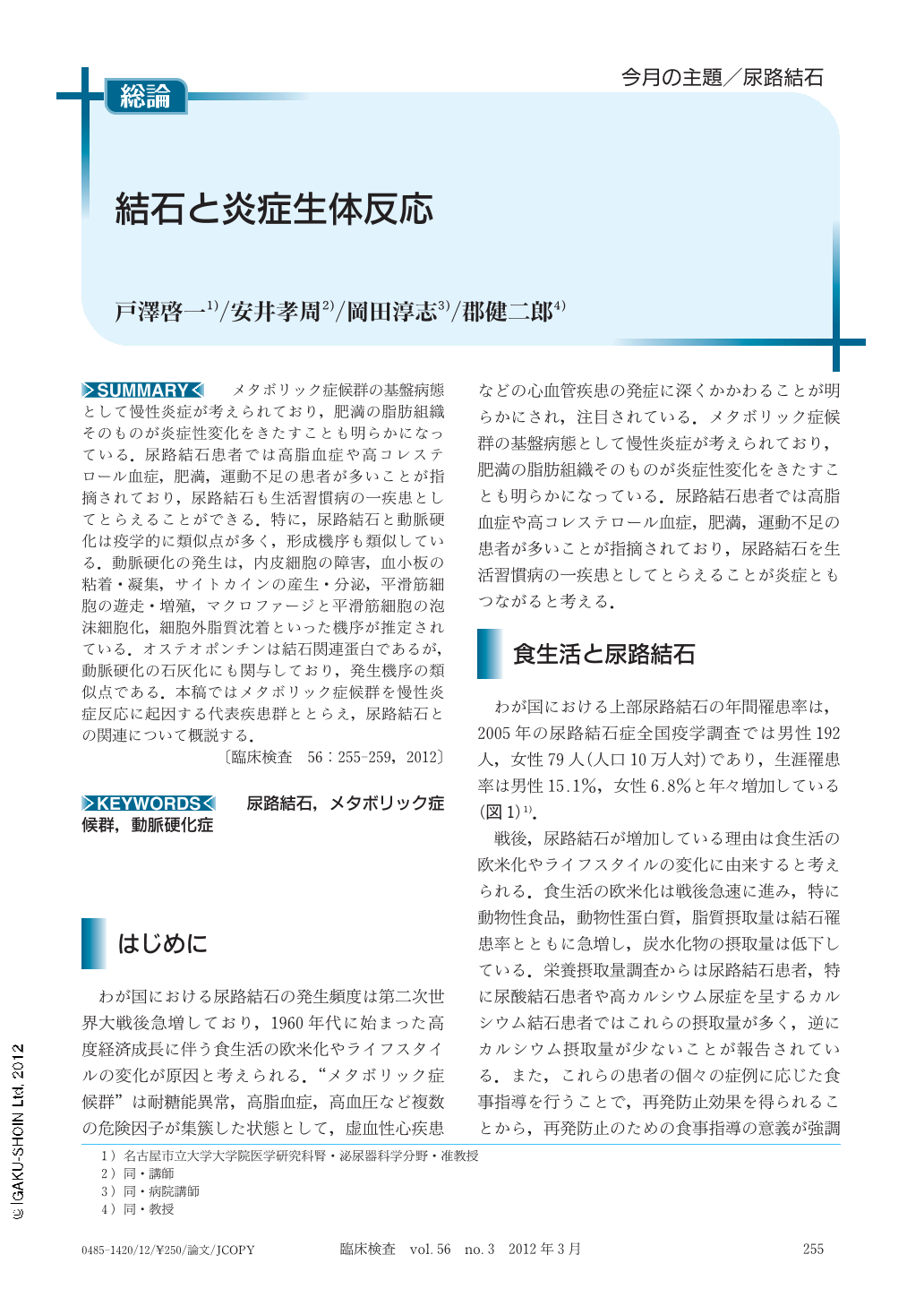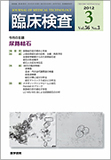Japanese
English
- 有料閲覧
- Abstract 文献概要
- 1ページ目 Look Inside
- 参考文献 Reference
メタボリック症候群の基盤病態として慢性炎症が考えられており,肥満の脂肪組織そのものが炎症性変化をきたすことも明らかになっている.尿路結石患者では高脂血症や高コレステロール血症,肥満,運動不足の患者が多いことが指摘されており,尿路結石も生活習慣病の一疾患としてとらえることができる.特に,尿路結石と動脈硬化は疫学的に類似点が多く,形成機序も類似している.動脈硬化の発生は,内皮細胞の障害,血小板の粘着・凝集,サイトカインの産生・分泌,平滑筋細胞の遊走・増殖,マクロファージと平滑筋細胞の泡沫細胞化,細胞外脂質沈着といった機序が推定されている.オステオポンチンは結石関連蛋白であるが,動脈硬化の石灰化にも関与しており,発生機序の類似点である.本稿ではメタボリック症候群を慢性炎症反応に起因する代表疾患群ととらえ,尿路結石との関連について概説する.
Chronic inflammation can be considered as the base of metabolic syndrome, and it is also reported clearly that the adipose tissue of obesity patients causes an inflammatory change. In patients with urolithiasis, it is pointed out that there are many patients with hyperlipemia, obesity, and lack of exercise. Furthermore, urolithiasis can be regarded as one of the lifestyle-related diseases. Especially urolithiasis and arteriosclerosis have many points in common in epidemiology and formation mechanism. Although osteopontin is a calculus related protein, it participates also in the calcification of arteriosclerosis. In this paper, metabolic syndrome is shown to be a representative factor resulting from a chronic inflammation reaction, and its relationship with urolithiasis is described.

Copyright © 2012, Igaku-Shoin Ltd. All rights reserved.


